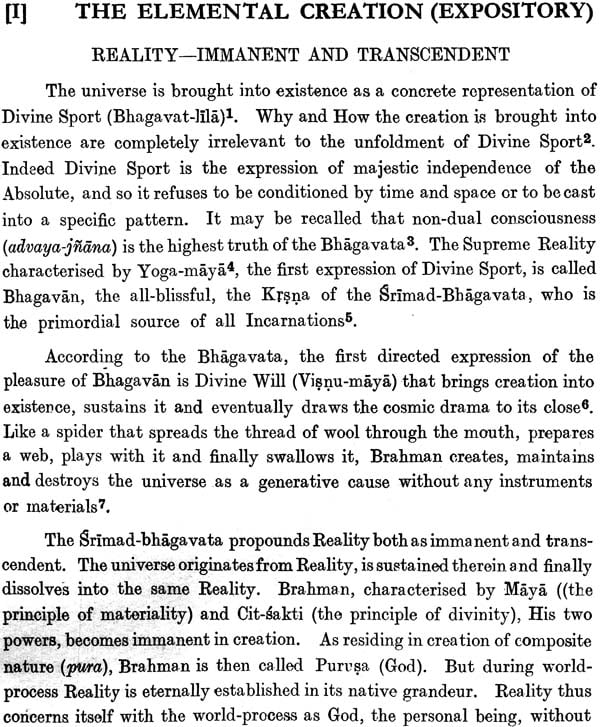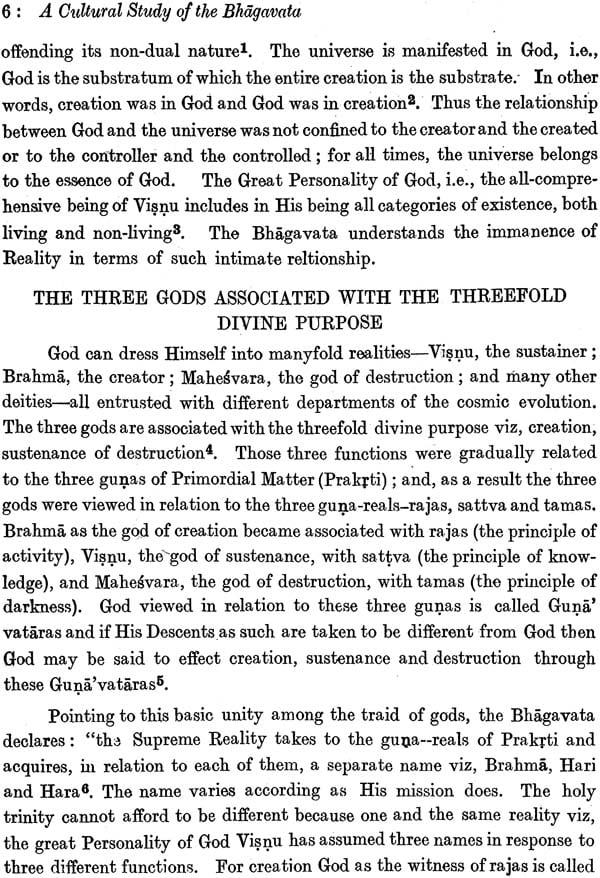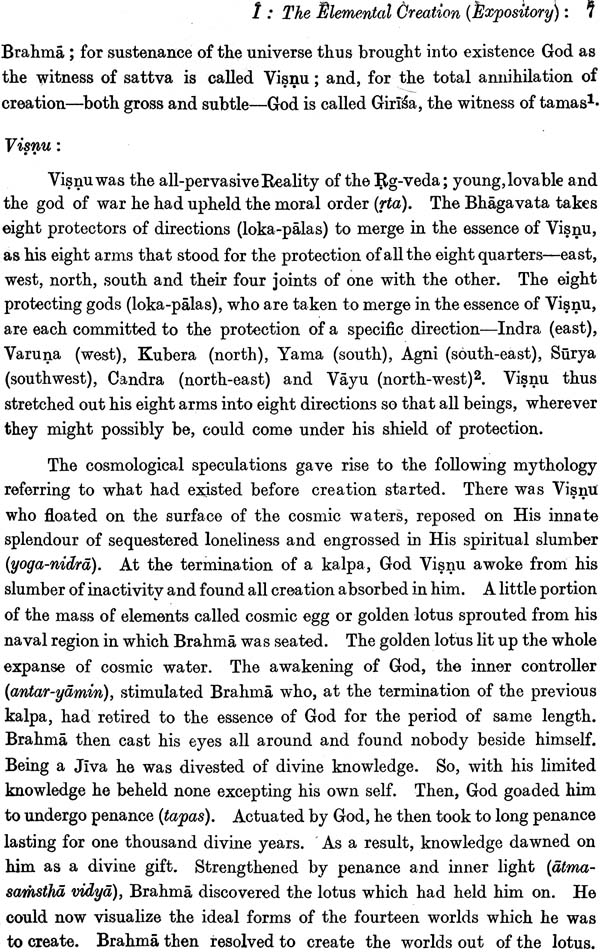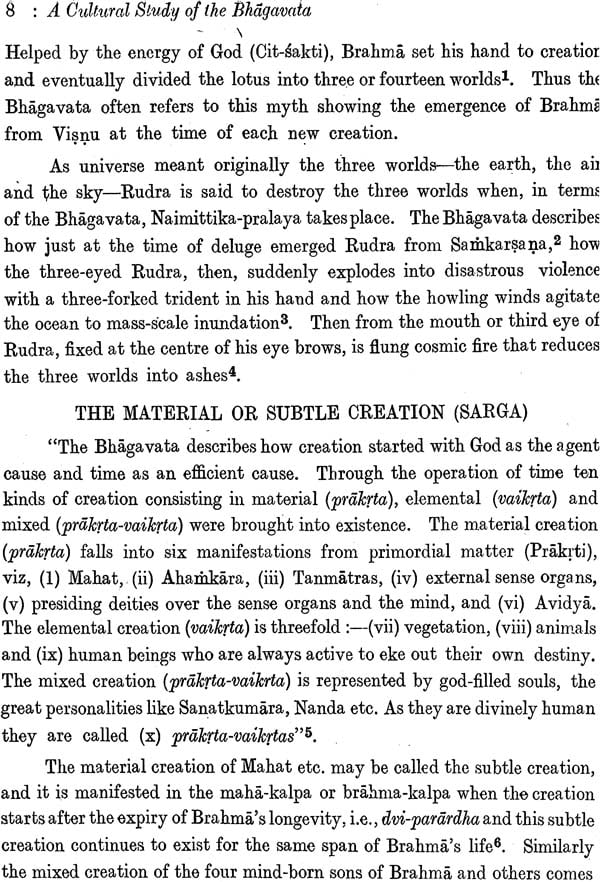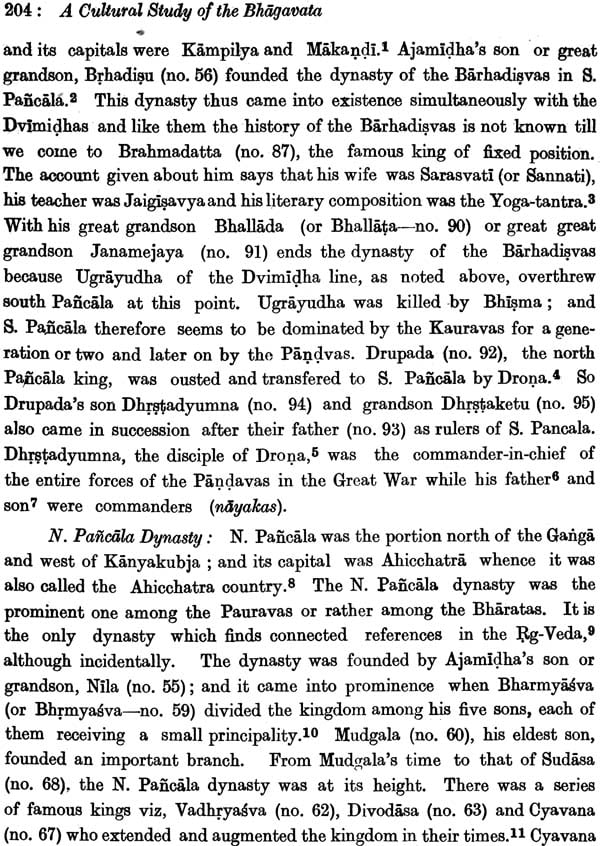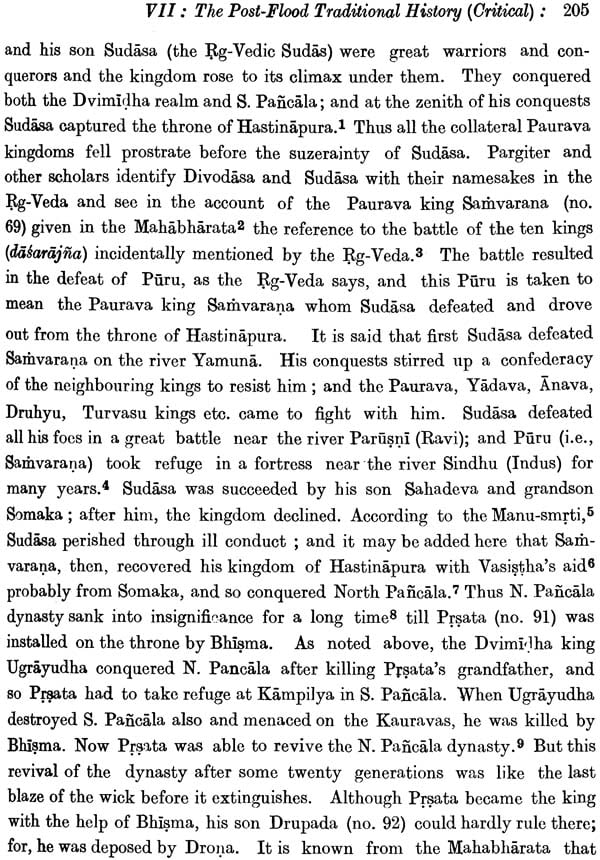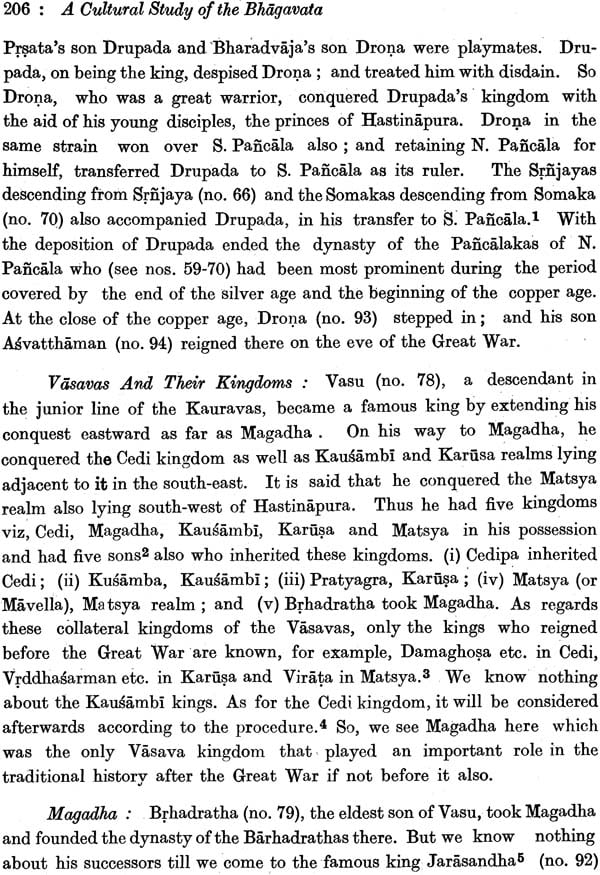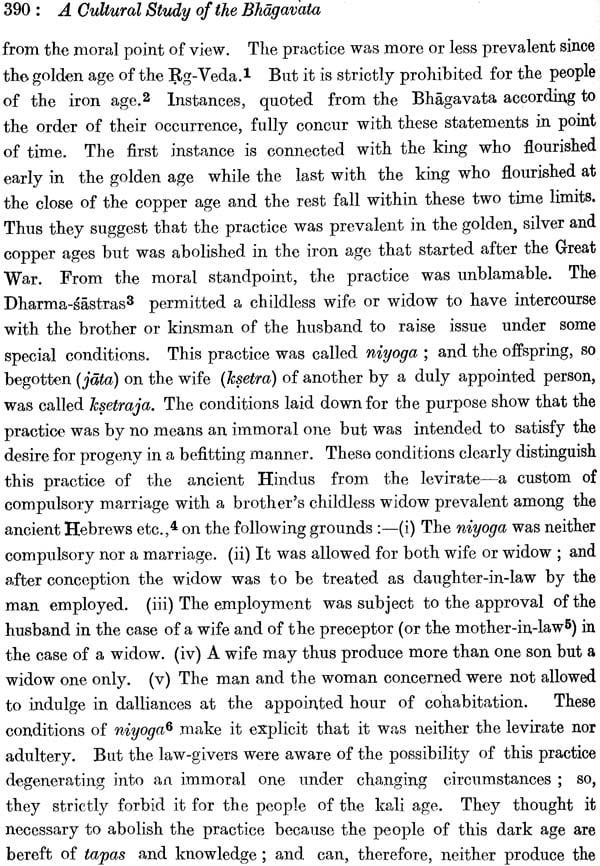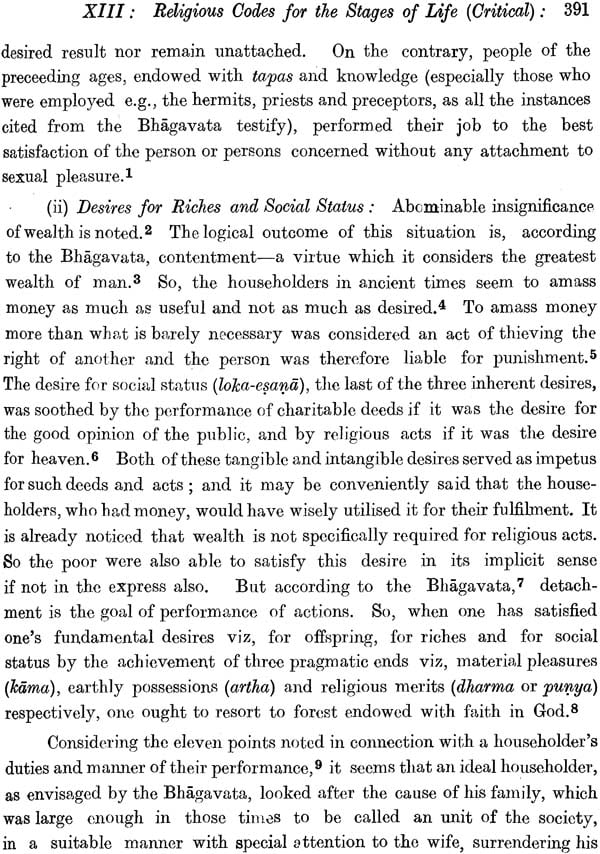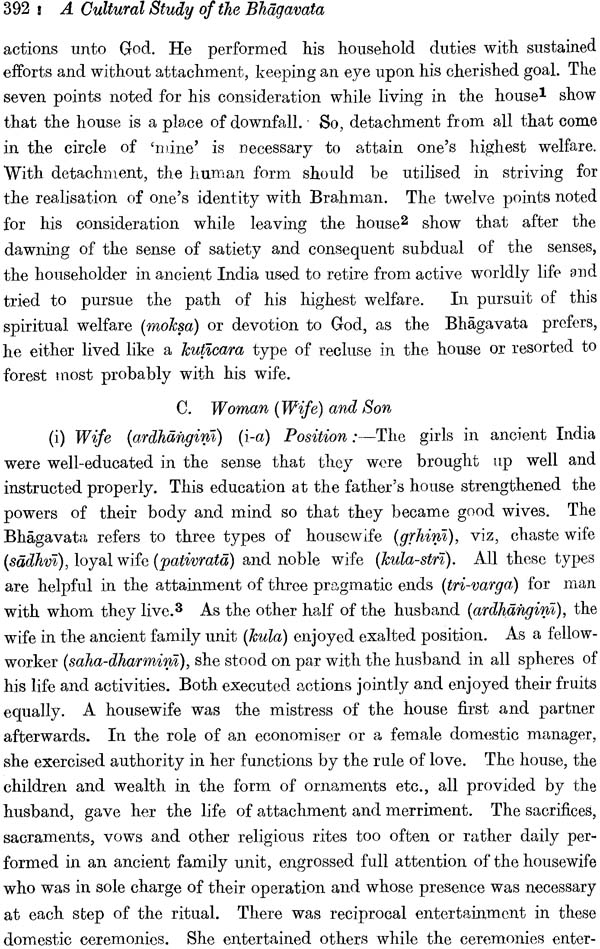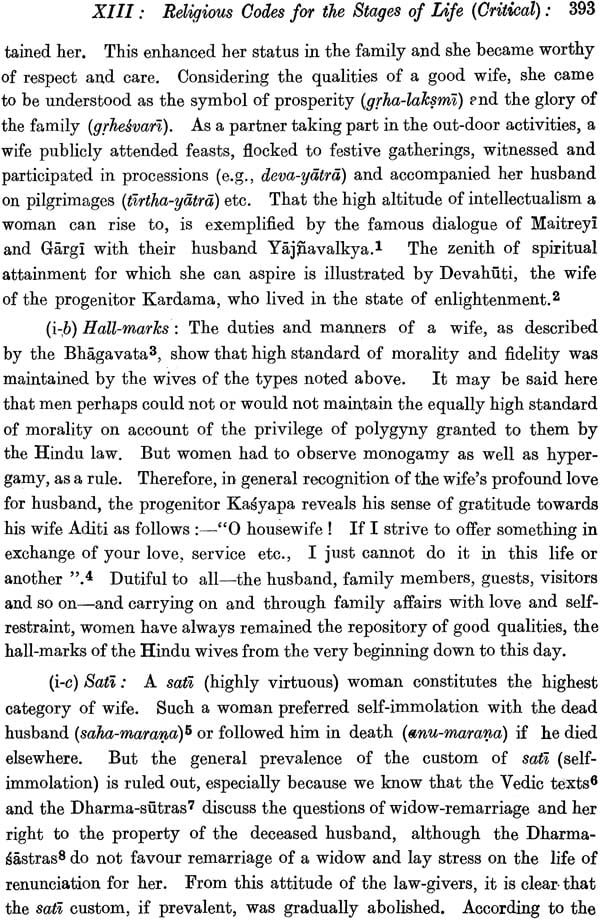
A Cultural Study of the Srimad-Bhagavata (An Old and Rare Book)
Book Specification
| Item Code: | NAG596 |
| Author: | Kisori sarana Tripathi |
| Publisher: | Banaras Hindu University |
| Language: | English |
| Edition: | 1969 |
| Pages: | 520 |
| Cover: | Hardcover |
| Other Details | 9.5 inch X 6 inch |
| Weight | 1 kg |
Book Description
Introduction
Knowledge of the ancient (itihasa) lore (purana) has always been an indispensable aid to the proper understanding of the Vedas.! The Atharva Veda bears first testimony to the compilation as well as classification of the "Itihas Purana" into two categories viz, the ltihasa (represented by the Epics) and the Purarna (represented by the extant eighteen Maha-Puranas and the Upa-Puranas of the same number). But the border line between these Books of two categories still remained undefined. Neither the Epics nor the Puranas Were exclusively historical or mythological but were both history (itihasa) and myth (purana).
Since the beginning of the silver age, the Purana literature was growing by leaps and bounds. Akhyanas (stories), Upakhyanas (anecdotes), Gathas (ballads) and Kalpas (or kalpajoktis, description of vast cosmic periods) are said & to be the earliest contents that constituted the' Samhita' of a Purana, similar to the Vedic Sarhhitss of the period. The postulates also of sacrificial milieu-gods, hermits, kings, Prajapati, Manu and Many-cyclessubsequently found entrance into the contents of the Purana literature of the sacrificial era. Thus (i) Sarga (creation), (ii) Prati-sarga (re-creation after dissolution), (iii) Vamsa (genealogy of gods and hermits), (iv) Vamsa'nucarita (history of dynasties) and (v) Manvantara (Manu-periods of time) came to be recognised as the five constituents (panca-laksana) of a PuranaSamhita,6 during the Brahmana period (or the silver age).
At the end of the copper age, Vyasa (1000 B.C.) transmitted the mass of ancient lore, with its evergrowing volume ensured by its recitals at the rituals of the sacrificial era, to his pet disciple Romaharsana. The bards (pauranikas or sutas)-Romaharsana, his disciples among whom his son Ugrasravas was prominent and their disciples and so on nourished under their loving care the Purana literature to attain a gigantic magnitude in times to come. This is duly noticed by Apastamba (500 B.C.).
Already the Chandogya-Upanisad had conferred the dignity of the fifth Veda on the Itihasa-Purana. So, the sacred mission of propagating the cardinal teachings of the Vedas was throughout maintained in the meandering evolution of the Purana literature in the post-War era or the iron age when each Purarna-Samhita became the encyclopaedia of world-knowledge to feed the popular mind. For example, during this era, insecure Brahmanism (due to the rise of the heretical cults and foreign invasion resulting in social and political anarchy) was responsible for the entrance of Brahmanical teachings especially ritualistic and Smrti materials in the Puranas and the Epics to re-establish the primary authority of the Vedas on dharma (religion) and the practice of Varna' srama-dharma (customary morality) respectively.
Under the stress of Vaisnava theology, the 'five constituent topics' of a Purana underwent further elaboration, as found in the Bhagavata and in its wake in the Brahma-Vaivarta. The elaboration meant the orientation of the Purana literature from its mundane character to high metaphysic .In the Bhagavata, for instance, creation (sarga) began to be viewed under two heads, subtle and gross. The subtle creation stopped with the emergence of the comic egg (anda). Then followed the creation of the fourteen worldsthe gross creation. While the subtle creation was called by the old name (i) Sarga, gross creation attained the name (ii) Vi-sarga, i.e., differentiation and new creation (pratisarga) became a part of it. As pratisarga presupposes deluge or dissolution (pralaya), (iii) Manvantara (the new regime of another Manu and its cycle lasting for a Kalpa), the original topic, was retained. As for the remaining two old constituents, the Bhagavata omitted Vamsa and described Vamsa'nucarita under the new name, (iv) lsa'nucarita. of these four, the first two are concerned with cosmology and the latter two with human history in point of time-sequence. The other six new topics are : (v) Sthana (or vrtti, the state of law and order ensured by God), (vi) Posana (or raksa: welfare of all with the help of his devotees as well as by His incarnations), (vii) Uti (or karma-vasana, material lust arising out of the performance of ephemeral deeds), (viii) Nirodha (hetu or samstha, physical annihilation), (ix) Mukti (atyantika laya, salvation attainable by the total disappearance or samstha of the physical world that ensnares the individual soul) and (x) Asraya (or apasraya, the only source and the last resort of the universe, the Ultimate Reality, the root of creation).
The sublime metaphysical plane of the Bhagavata would explain why it has elaborated the original five constituent topics into ten. The Bhagavata propounds that the first nine topics are intended merely to bring the Ultimate Reality, called Brahman or Paramatman', to clearer perspective. Sridhara has ascribed great distinction to the Bhagavata on the ground that it was the Bhagavata where all the 'ten topics', mentioned above, have received adequate treatment, while the extant Puranas of distinction (maha-puranas) hardly accommodated all the ten topics. The Bhagavata treatment is therefore significant. It prepares the ground for emancipation by raising the mind to the high metaphysical plane leading to the realization of the supreme truth (Brahman).
Contents
| Abbreviations | iv |
| The Writer's Note | vi-vii |
| Foreword | viii |
| Introduction | ix-xxv |
| Phenomenal Creation (Purusa, The Personal God) | 5-41 |
| Human History (Pre-Historic Age) | 45-81 |
| Political History (cir. 2090 B.C.-800 A.D.) | 85-288 |
| Social History (cir. 1610 B.C.-400 A.D.) | 291-410 |
| Conclusion | 411-415 |
| Appendix I (to political history) | 419-428 |
| Appendix II (to social history) | 431-459 |
| Bibliography | 461-462 |
| Abbreviations used in the index | 463 |
| Consolidated index | 464-488 |
| Errors and corrections (additions) | 489-492 |
